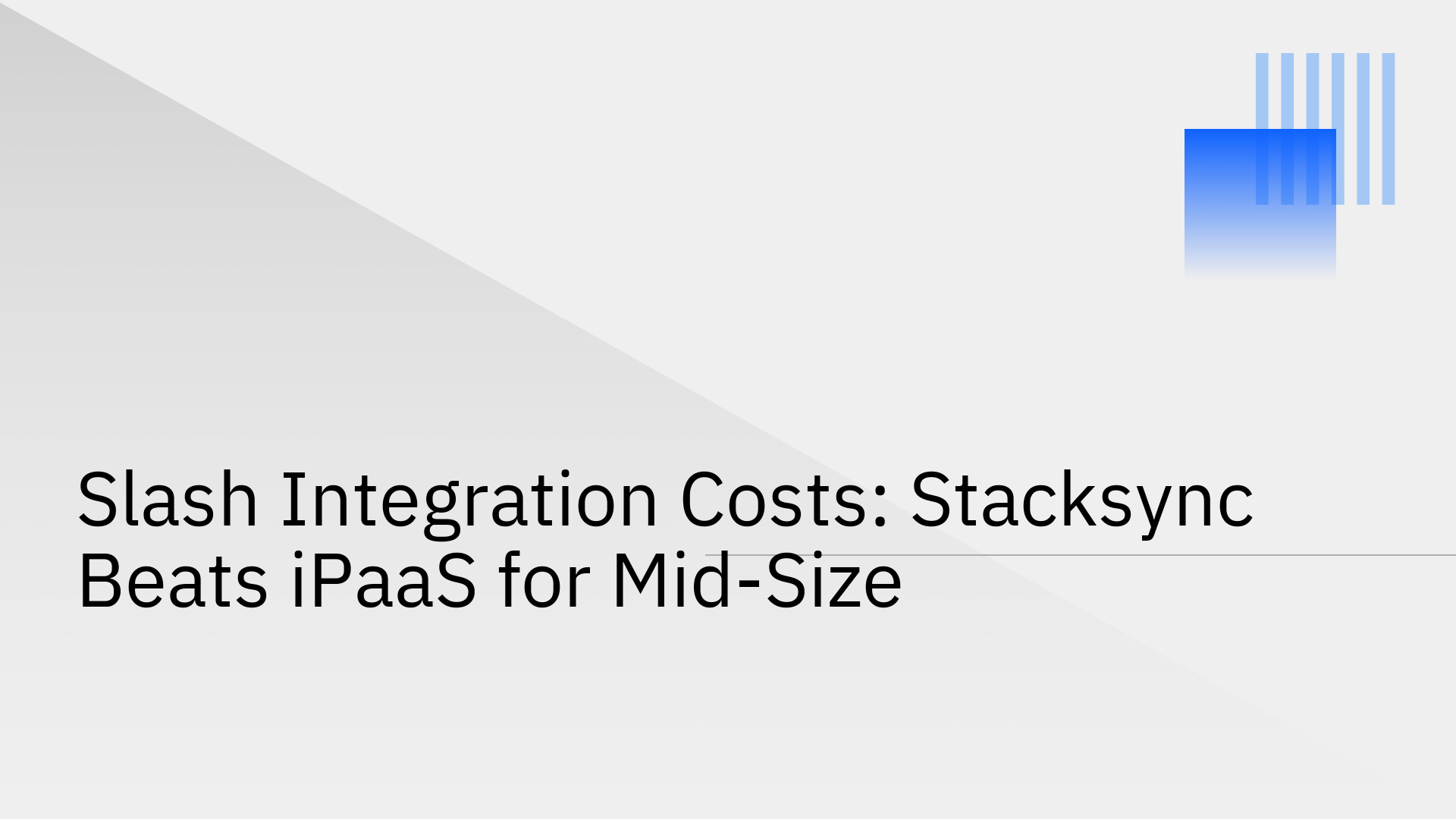
In today's competitive landscape, mid-sized businesses must connect their various software applications to operate efficiently and make smart decisions.
This process, called data integration, is crucial. To solve this, many companies turn to an Integration Platform as a Service (iPaaS), which acts as a central hub for connecting tools. However, these platforms often come with complex pricing and unexpected hidden costs, making them a difficult choice for businesses with limited budgets and resources. Stacksync provides a modern, cost-effective alternative, designed from the ground up to solve these integration challenges without the financial strain.
Traditional iPaaS solutions are powerful, but they are typically built with the massive budgets and complex needs of large enterprises in mind. This creates an "iPaaS trap" for mid-sized businesses, who end up navigating confusing pricing plans and paying for features they don't use. This mismatch leads to overspending, inefficient use of resources, and a poor return on investment.
One of the biggest issues with traditional iPaaS is the confusing pricing. Vendors use various models like tiered plans, subscriptions, or pay-as-you-go, making it hard to predict your monthly bill [1]. Costs are often based on confusing metrics like the number of "tasks," "recipes," or data volume, which don't always align with the value your business receives [2]. This lack of clarity can lead to surprise budget overruns, especially as your company grows and your data needs increase.
The price you see on an iPaaS vendor's website is rarely the final price you pay. Mid-sized businesses often face several hidden costs that aren't obvious at first glance.
Stacksync was built to be the direct solution to the iPaaS trap. Our platform and pricing are designed specifically for the needs of mid-sized businesses, delivering powerful integration without the complicated and expensive cost structure.
We believe integration pricing should be simple, predictable, and fair. Stacksync’s pricing is based on two clear metrics: the number of active connections (syncs) and the amount of data (records) you sync. That’s it. There are no hidden fees for core features like real-time, two-way sync or for unlimited updates to your data. As your business grows, you automatically benefit from volume discounts, ensuring your costs are always predictable and affordable. This transparent approach allows you to budget with confidence, which is a stark contrast to the confusing pricing models of many competitors. You can see a comparative analysis of pricing models on our blog.
Our platform is designed to empower your entire team, not just your most experienced developers, reducing your reliance on expensive outside help.
When evaluating the best iPaaS solutions for a medium business, it's important to look past the marketing and compare the total cost and true capabilities.
This table offers a simple, side-by-side comparison of Stacksync and typical iPaaS platforms.
The table makes it clear: Stacksync offers more value and predictability for mid-sized companies. Our model eliminates the financial guesswork and resource drain common with traditional iPaaS. When looking for the best data integration tools for your business, this clarity is a game-changer.
For mid-sized businesses, traditional iPaaS solutions are often a poor fit, leading to high costs, operational headaches, and unpredictable bills. This model forces teams to spend more time managing their integration tool than getting value from their data.
Stacksync provides a powerful, scalable, and cost-effective alternative with a transparent pricing model built for today's businesses. By making enterprise-grade features like real-time, bi-directional sync standard, we empower everyone on your team—not just engineers—to build and manage the critical data integrations that move your business forward. Read our business guide to see how companies like yours succeed with Stacksync.
Ready to slash your integration costs and unlock the full power of your data? Book a demo or start your 14-day free trial today.